Oscar Wilde once said: "We are all in the gutter, but some of us are looking at the stars." I guess I would be that person who's always searching for the beauty in life no matter the circumstances. And what would be more fascinated and more magical than a night sky full of stars?
The Hubble Space Telescope launched into low Earth orbit in 1990s unveiled vast cosmic islands in the endless wild ocean of the universe, and here are some of the most beautiful ones.
#1 Hoag’s Object
Hoag's Object is an unusual ring galaxy in the constellation of Serpens Caput. It is identified as either a planetary nebula or a peculiar galaxy. The galaxy has approximately eight billion stars, and is roughly 120,000 light-years across.
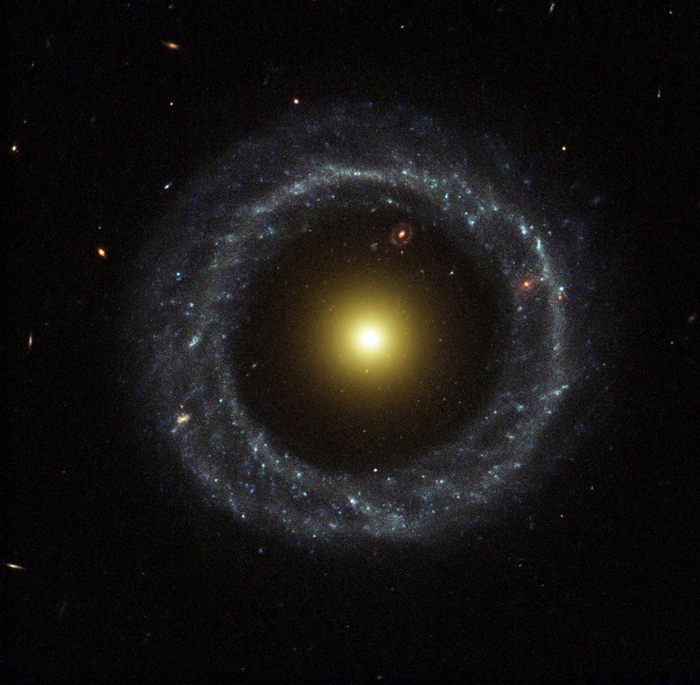
Image credits: wikipedia.org
#2 W2246-0526
W2246-0526 is the most luminous galaxy ever discovered that is cannibalizing not one, not two, but at least three smaller galaxies, which could explain its extreme brightness.
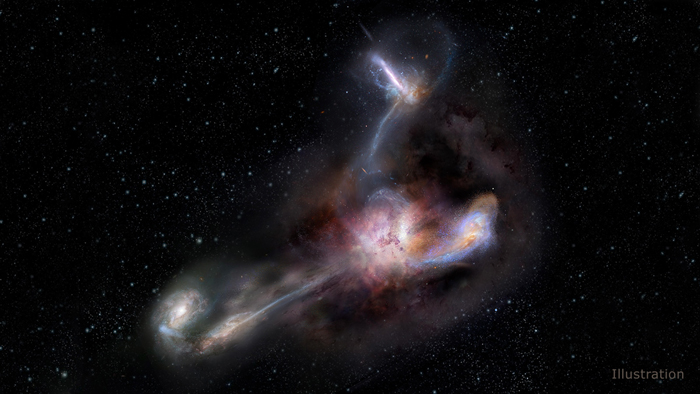
Image credits: NASA
#3 Sombrero Galaxy
The Sombrero galaxy is a peculiar galaxy of unclear classification in the constellation borders of Virgo and Corvus and located around 28 million light-years away from Earth.
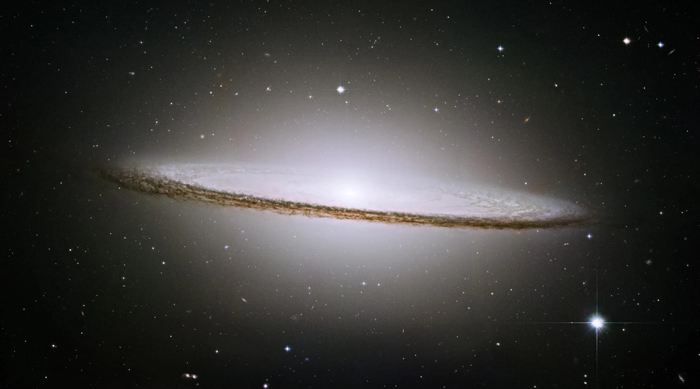
Image credits: NASA
#4 Whirlpool Galaxy
The Whirlpool Galaxy, also known as Messier 51a (M51a) or NGC 5194, is an interacting grand-design spiral galaxy with a Seyfert 2 active galactic nucleus. It lies in the constellation Canes Venatici and was the first galaxy to be classified as a spiral galaxy.
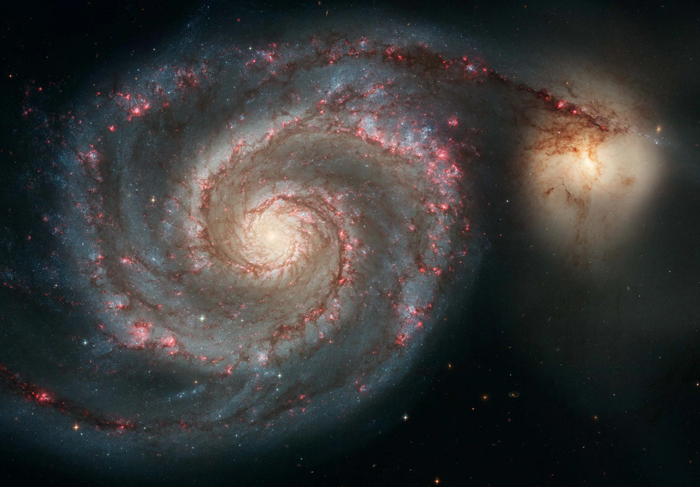
Image credits: NASA
#5 Phantom Galaxy or Messier 74
Phantom Galaxy or Messier 74 is a spiral galaxy in the constellation of Pisces and smaller than our own galaxy.
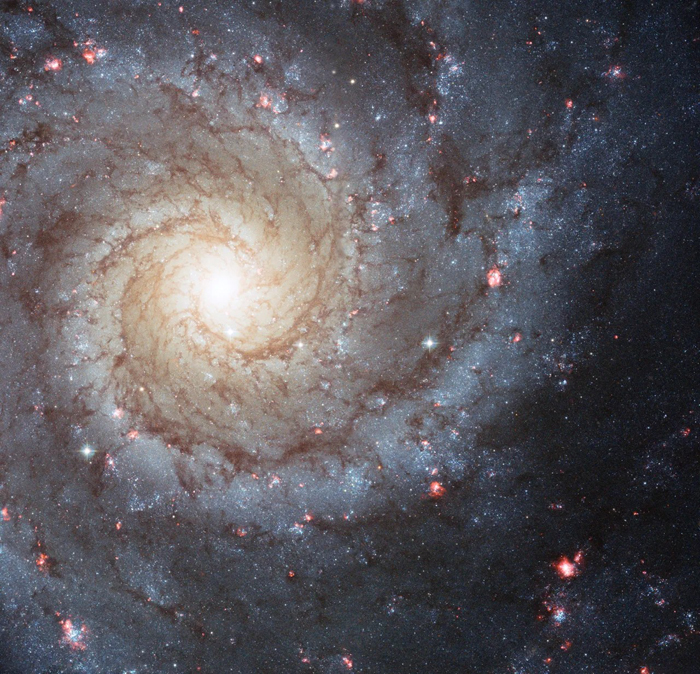
Image credits: NASA
#6 Large Magellanic Cloud
Large Magellanic Could is a spiral satellite galaxy of the Milky Way. It is only 160,000 light-years from Earth therefore visible to the naked eye as a faint object in the Earth's southern hemisphere located between the constellations of Dorado and Mensa.
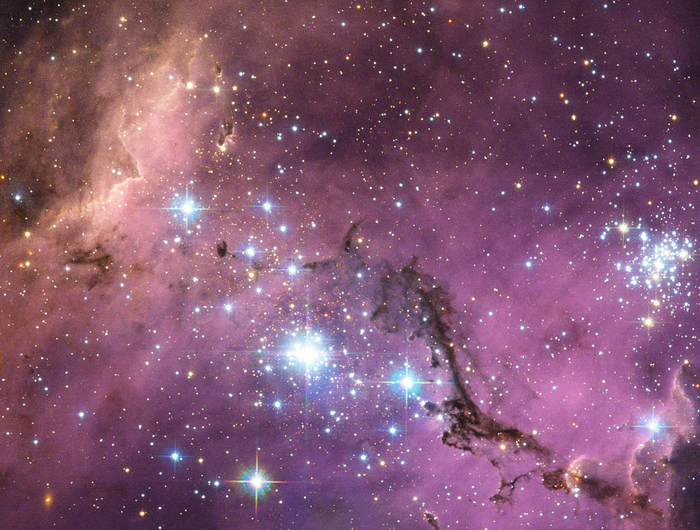
Image credits: NASA
#7 The Black Eye Galaxy
The Black Eye Galaxy is a relatively isolated spiral galaxy 17 million light-years away in the mildly northern constellation of Coma Berenices.
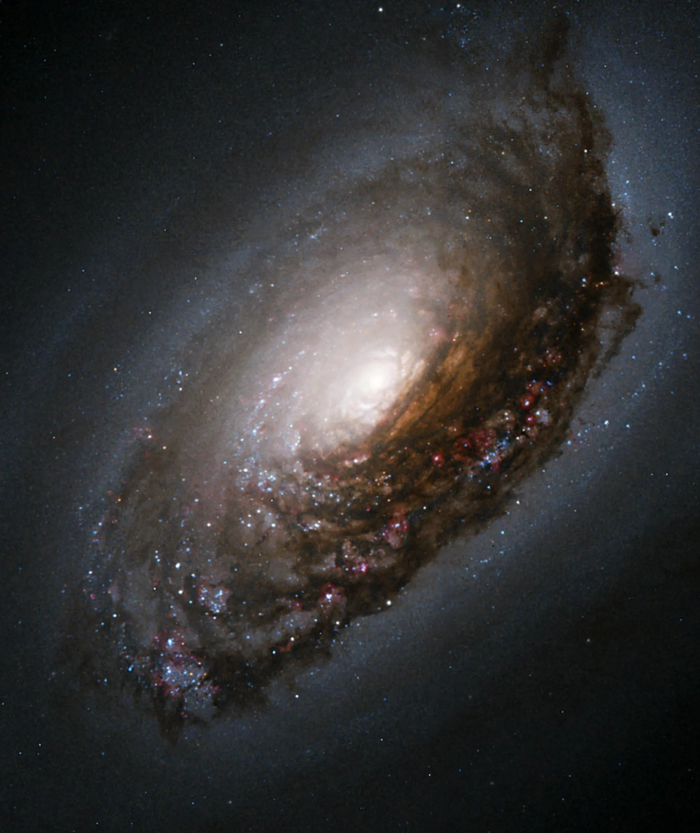
Image credits: NASA
#8 Galaxy NGC 6753
This galaxy is 150 million light-years away from Earth. Astronomers mentioned, that it is one of only 2 known spiral galaxies, large enough and close enough to allow detailed observations of its crowns.
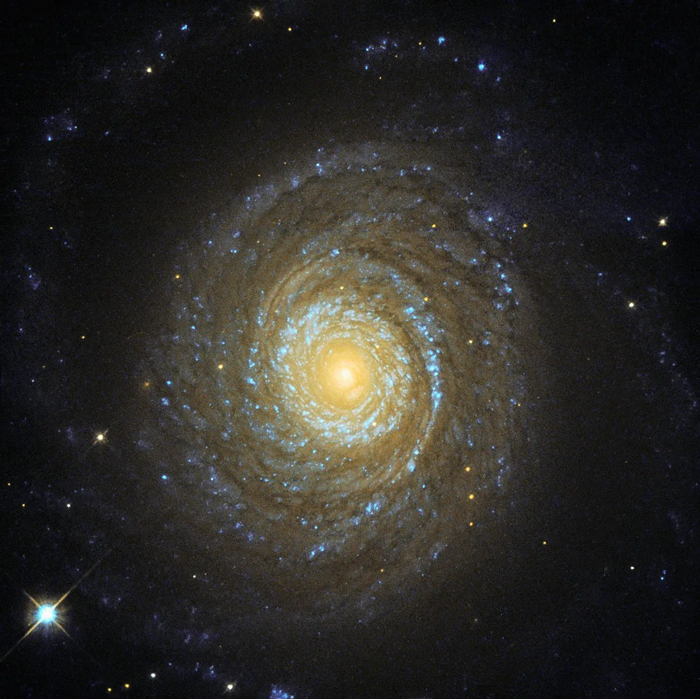
Image credits: NASA
#9 Galaxy NGC 4696
NGC 4696 is an elliptical galaxy located in the constellation Centaurus. It has a supermassive black hole that beats like a heart every 5 to 10 million years.
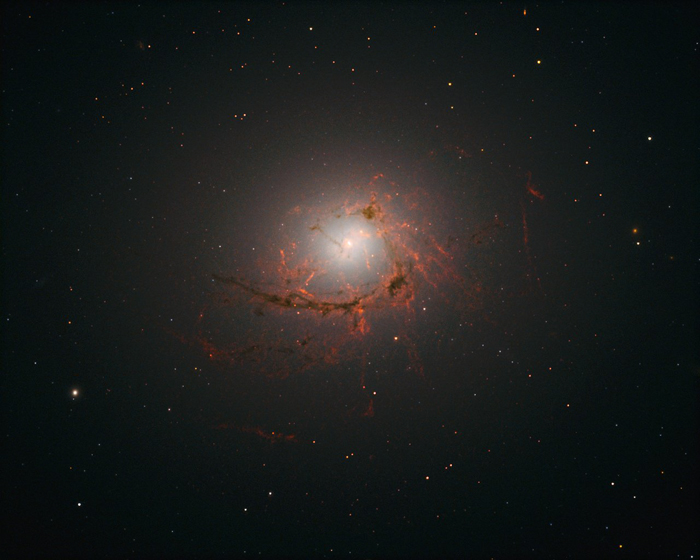
Image credits: NASA
#10 Galaxy NGC 4388
NGC 4388 is an active spiral galaxy in the equatorial constellation of Virgo and located at a distance of 57 million light-years from Earth.
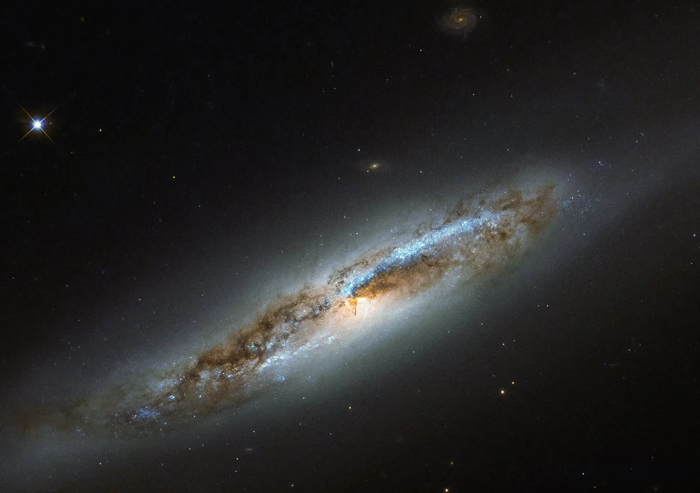
Image credits: NASA
#11 Porpoise Galaxy
Porpoise Galaxy or NGC 2936 is an interacting spiral galaxy located at a distance of 326 million light-years, in the constellation Hydra. NGC 2936 is interacting with elliptical galaxy NGC 2937 located just beneath it.
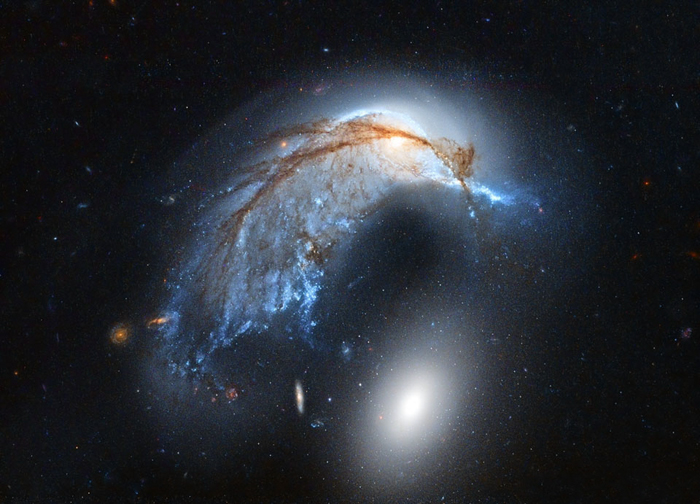
Image credits: NASA
#12 NGC 2207 and IC 2163
NGC 2207 and IC 2163 are a pair of colliding spiral galaxies about 80 million light-years away in the constellation Canis Major.
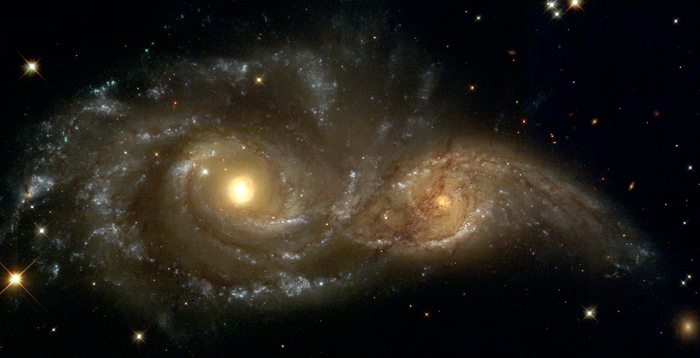
Image credits: wikipedia.org
#13 Galaxy I Zwicky 18
Galaxy I Zwicky 18 is a blue compact dwarf galaxy located about 59 million light-years away in the constellation Ursa Major.
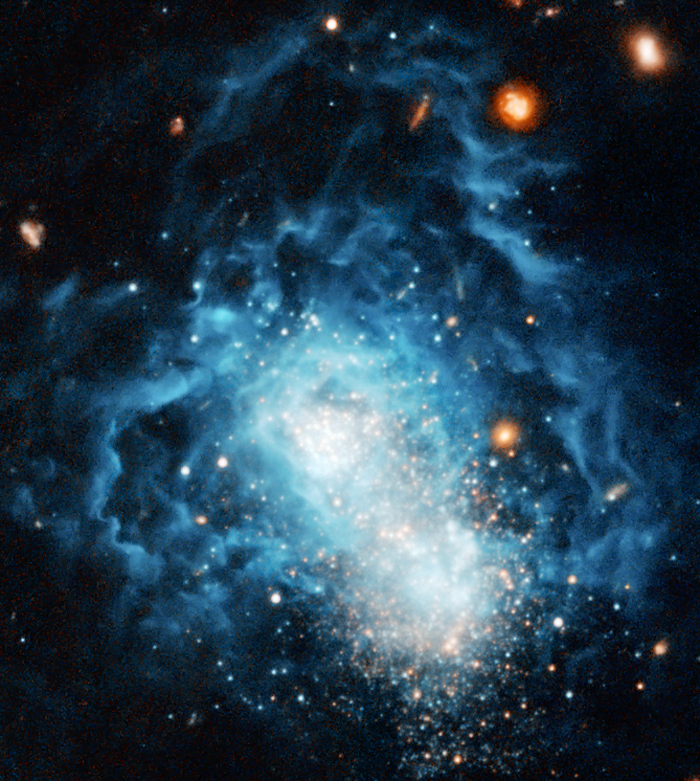
Image credits: wikipedia.org
#14 Kiso 5639
Kiso 5639 is a dwarf galaxy, member of a class of "tadpole" galaxies so named because of their bright heads and elongated tails.
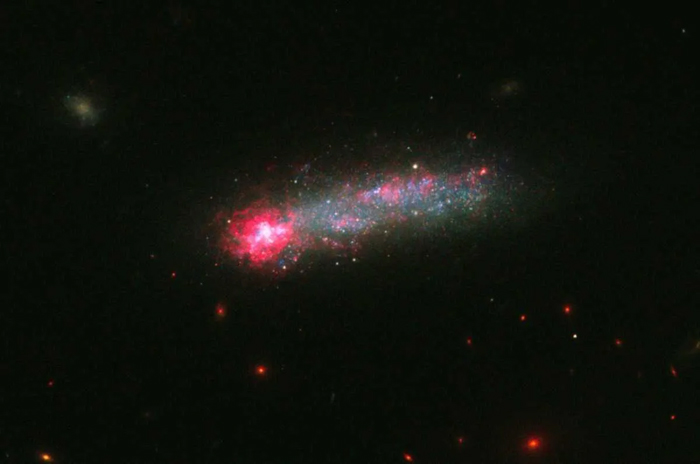
Image credits: NASA
#15 Sunflower Galaxy
Sunflower Galaxy is a spiral galaxy in the northern constellation of Canes Venatici with approximately 400 billion stars.
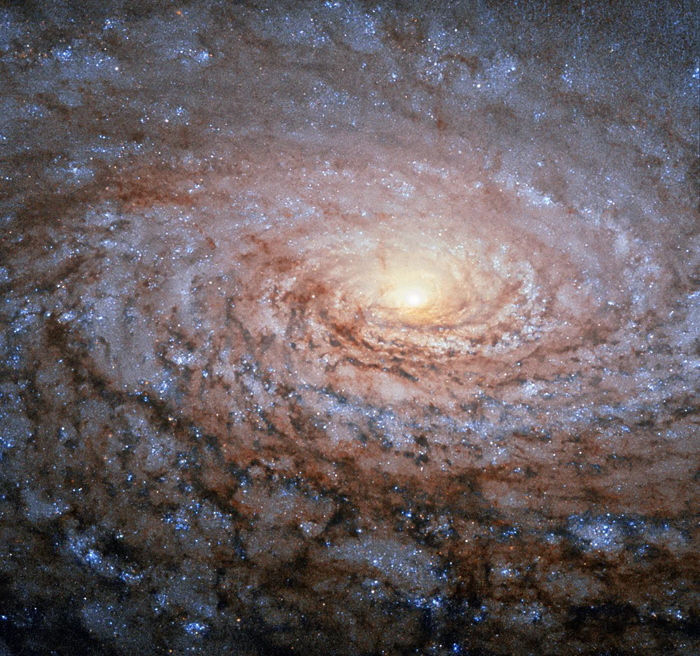
Image credits: NASA
#16 The Antennae Galaxies
The Antennae Galaxies are a pair of interacting galaxies in the constellation Corvus. They currently going through a starburst phase, in which the collision of clouds of gas and dust, with entangled magnetic fields, causes rapid star formation.
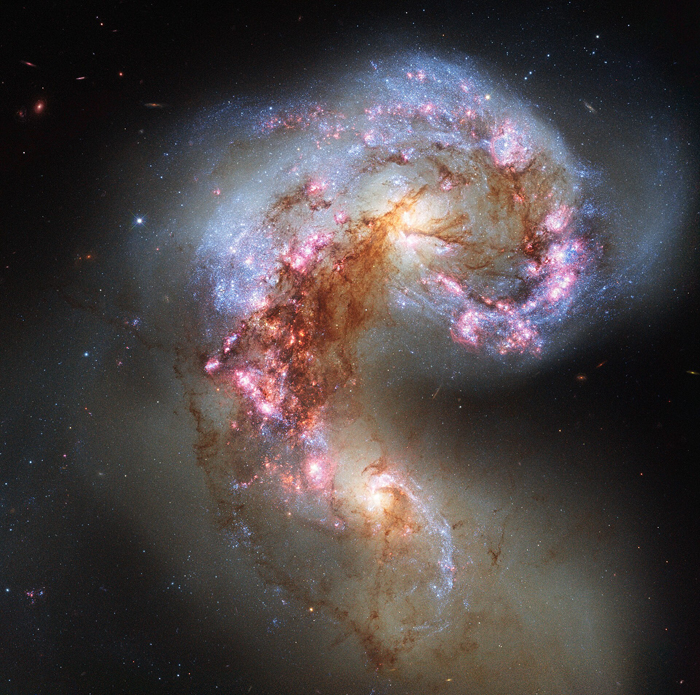
Image credits: wikipedia.org
#17 NGC 2336
NGC 2336 is a barred spiral galaxy located in the constellation Camelopardalis. It is located at a distance of circa 100 million light-years from Earth.

Image credits: NASA
#18 Milky Way
The Milky Way is a barred spiral galaxy, around 13.6 billion years old and home to our own solar system.
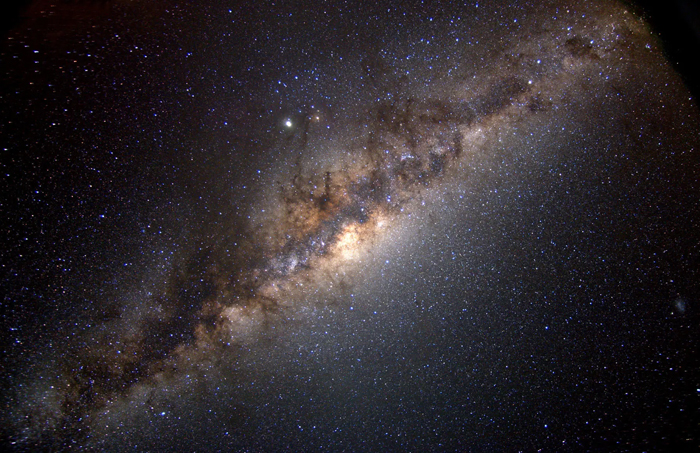
Image credits: NASA
#19 Galaxy NGC 2500
NGC 2500 is a barred spiral galaxy in the constellation Lynx.
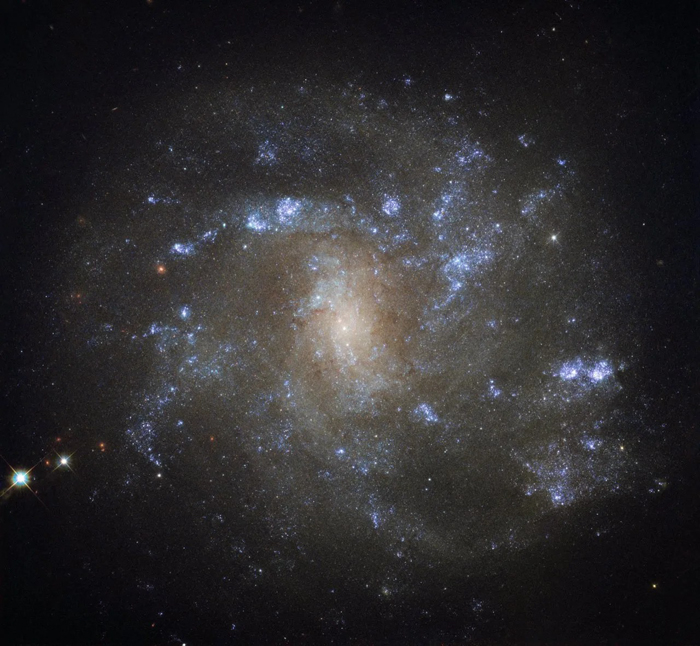
Image credits: NASA
#20 Messier 77
Messier 77, also known as NGC 1068 or the Squid Galaxy. It is a barred spiral galaxy in the constellation Cetus and about 47 million light-years away from Earth.
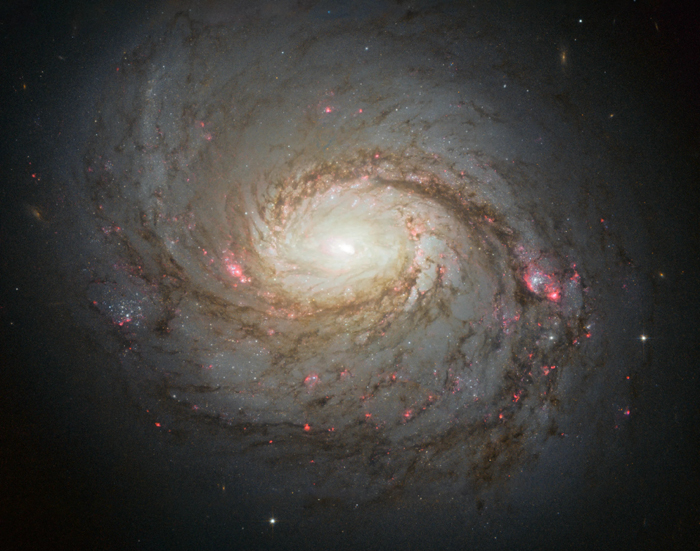
Image credits: NASA
#21 MACS 2129-1
MACS 2129-1 is an early universe so-called 'dead' disk galaxy that lies approximately 10 billion light-years away from Earth. MACS 2129-1 has been described as 'dead' as it has ceased making new stars.

Image credits: NASA
#22 Cigar Galaxy Or Messier 82
Cigar Galaxy is a starburst galaxy approximately 12 million light-years away from Earth in the constellation Ursa Major.
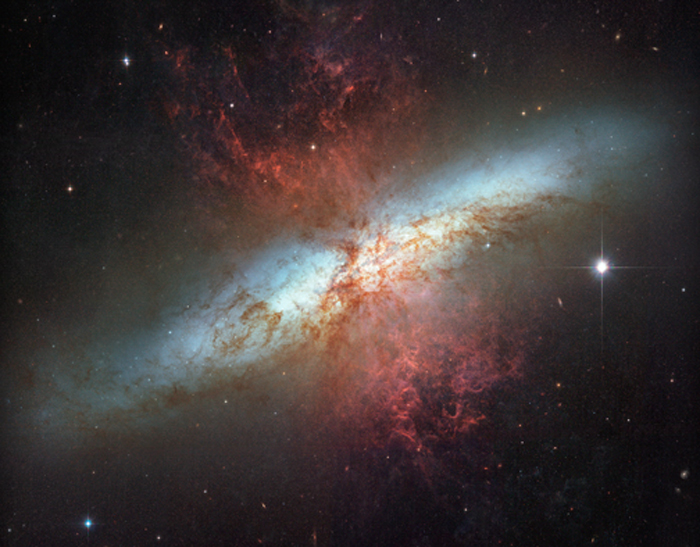
Image credits: NASA
#23 Galaxy RX J1140.1+0307
Galaxy RX J1140.1+0307 is a spiral galaxy that is centered on one of the lowest black hole masses known in any luminous galactic core.
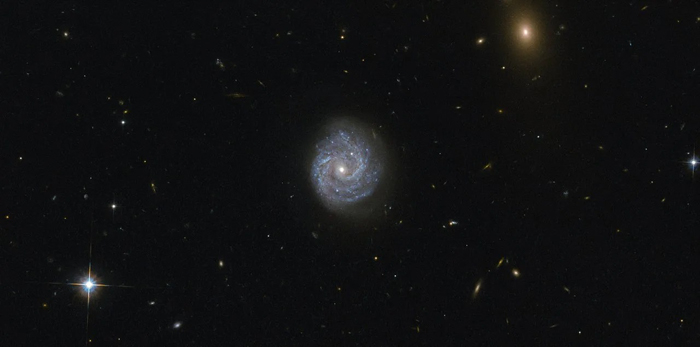
Image credits: NASA
#24 NGC 7674
NGC 7674 is a spiral galaxy located in the constellation Pegasus. It is located at a distance of circa 350 million light-years from Earth.
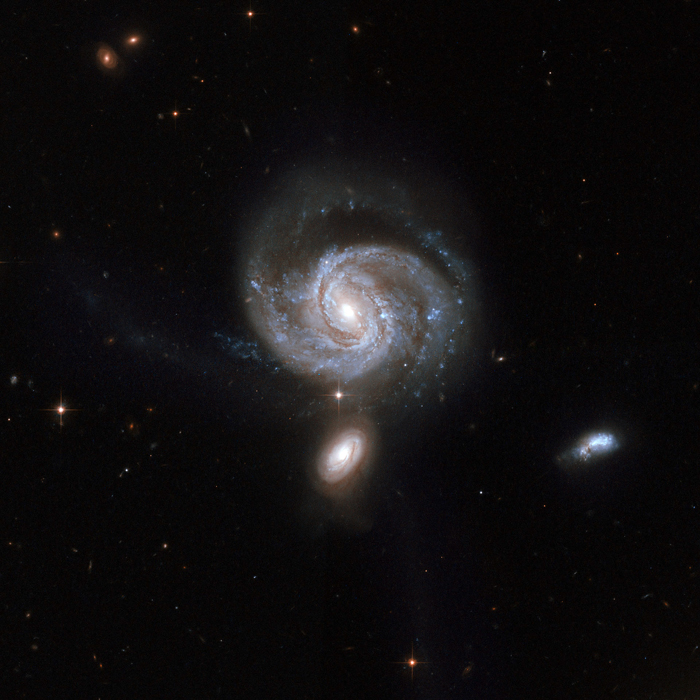
Image credits: wikipedia.org
#25 Andromeda Galaxy
The Andromeda Galaxy is a barred spiral galaxy, the nearest major galaxy to the Milky Way and the one of the few visible to the naked eye. It is located about 2,480,000 light-years from Earth.

Image credits: Ahmad Basem
#26 Galaxy IC 342
IC 342 is an intermediate spiral galaxy in the constellation Camelopardalis, located relatively close to the Milky Way.
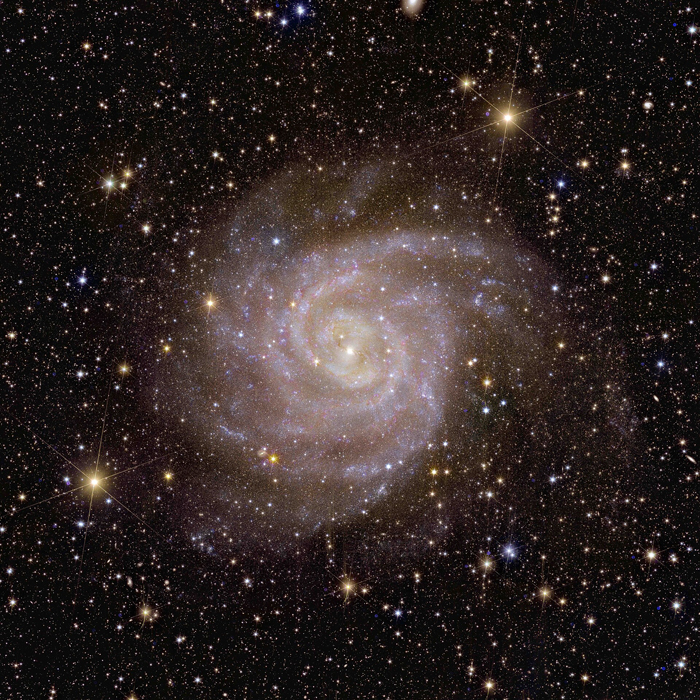
Image credits: wikipedia.org
#27 Messier 81
Messier 81 is a grand design spiral galaxy about 12 million light-years away in the constellation Ursa Major.
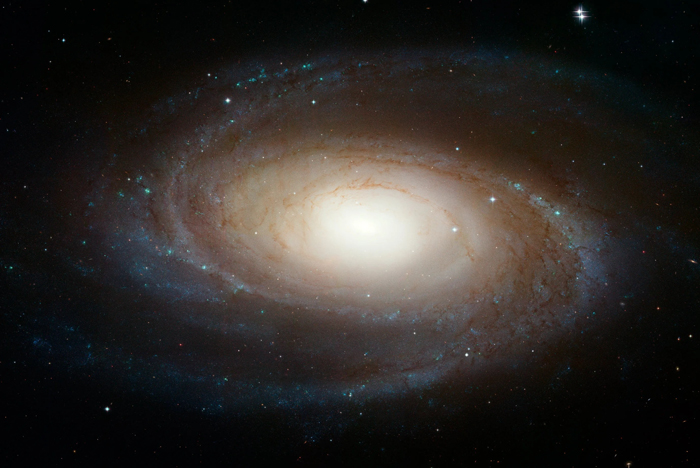
Image credits: NASA
#28 Hamburger Galaxy
NGC 3628, also known as the Hamburger Galaxy or Sarah's Galaxy, is an unbarred spiral galaxy about 35 million light-years away in the constellation Leo.
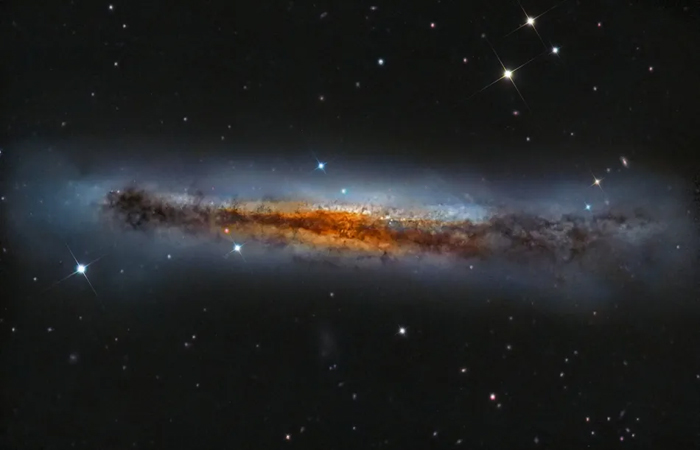
Image credits: NASA
#29 Galaxy NGC 3274
Galaxy NGC 3274 is a relatively faint spiral galaxy that is located over 20 million light-years away in the constellation of Leo.
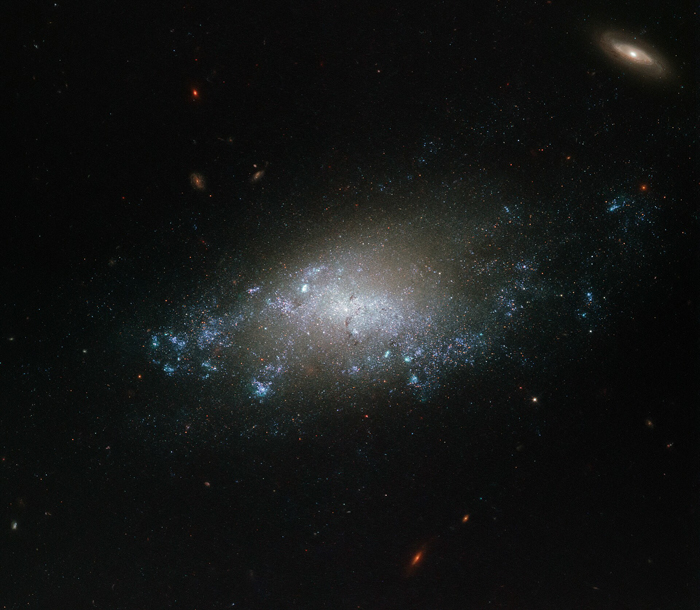
Image credits: wikipedia.org
#30 Galaxy NGC 6744
NGC 6744 is an intermediate spiral galaxy about 30 million light-years away in the constellation Pavo.
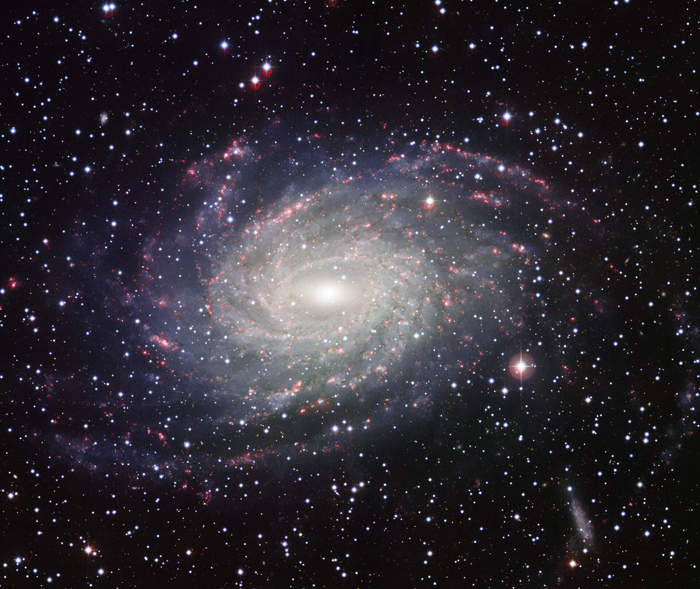
Image credits: wikipedia.org
#31 Galaxy MACS J0717.5+3745
MACS J0717.5+3745 is a large galaxy cluster located 5,4 billion light-years away in the constellation Auriga, appearing in the Massive Cluster Survey.
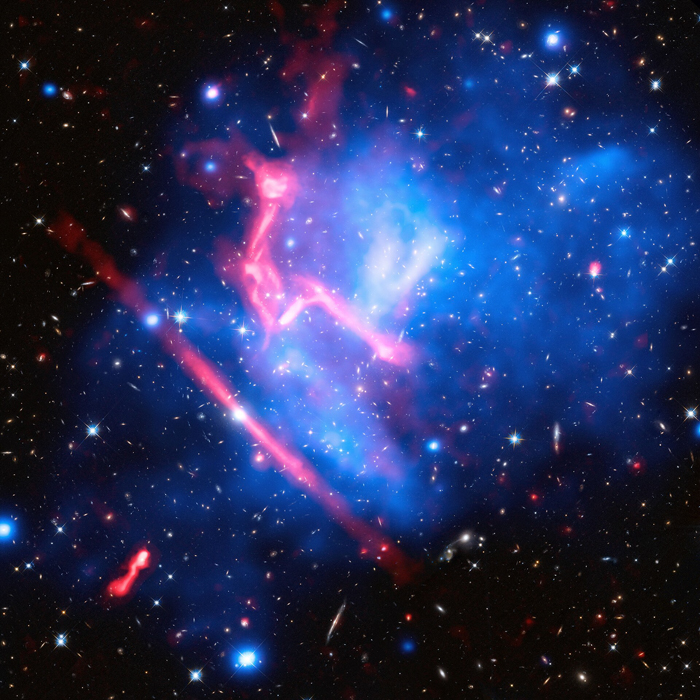
Image credits: wikipedia.org
#32 Galaxy Cluster IDCS 1426
This rare galaxy cluster, which is located 10 billion light years from Earth, weighs almost 500 trillion Suns.
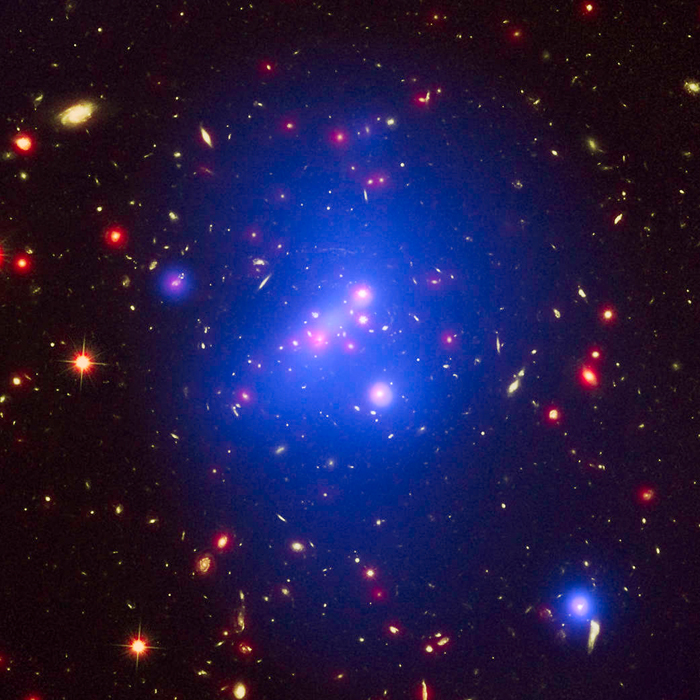
Image credits: NASA
#33 NGC 7331
NGC 7331, also known as Caldwell 30, is an unbarred spiral galaxy about 40 million light-years away in the constellation Pegasus.
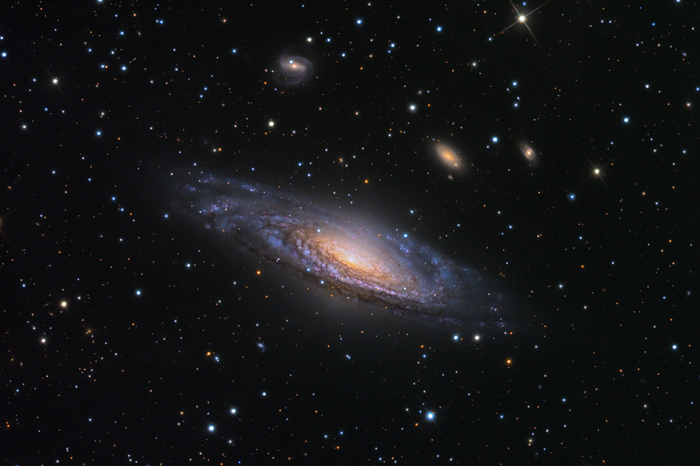
Image credits: wikipedia.org
#34 Galaxy Hockey Stick
The Hockey Stick is a highly warped edge-on barred spiral galaxy located in the local universe 30 million light years away from earth in the constellation Canes Venatici.
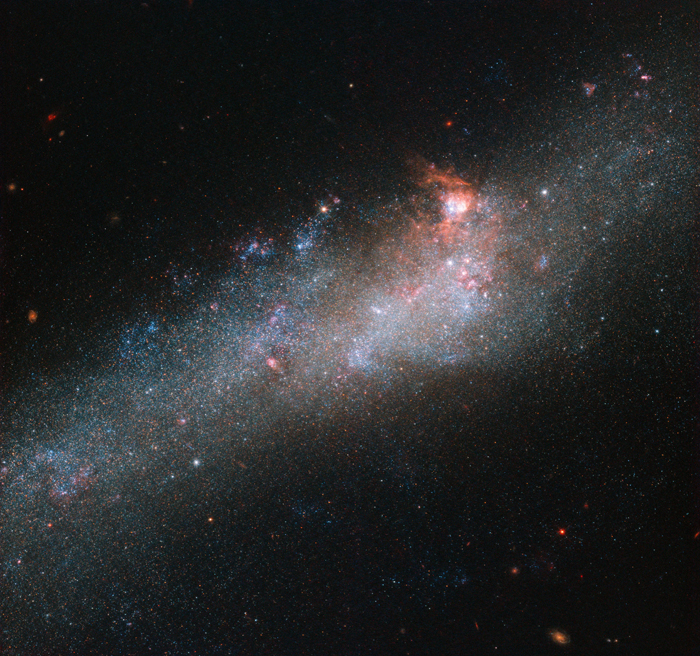
Image credits: NASA
#35 Galaxy NGC 4248
This beautiful clump of glowing gas, dark dust, and glittering stars is the spiral galaxy NGC 4248 is located about 24 million light-years away in the constellation of Canes Venatici.
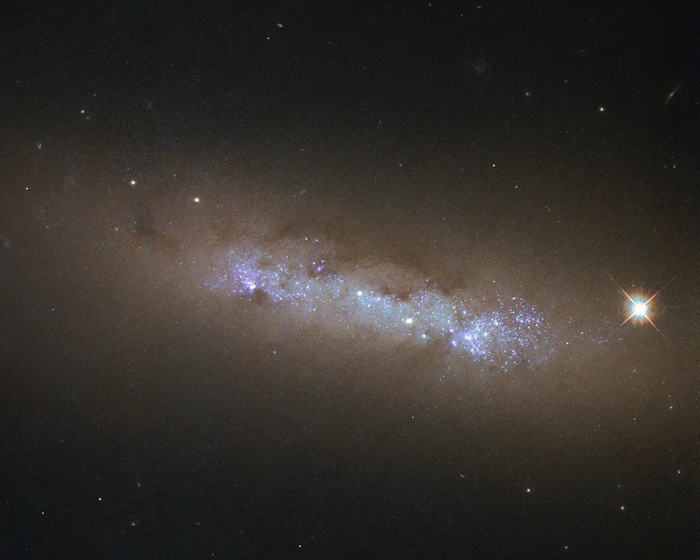
Image credits: NASA
#36 Galaxia ESO 486-21
Galaxia ESO 486-21 is a spiral galaxy, with an irregular and ill-defined structure, located about 30 million light-years away from Earth in the constellation of Lynx.
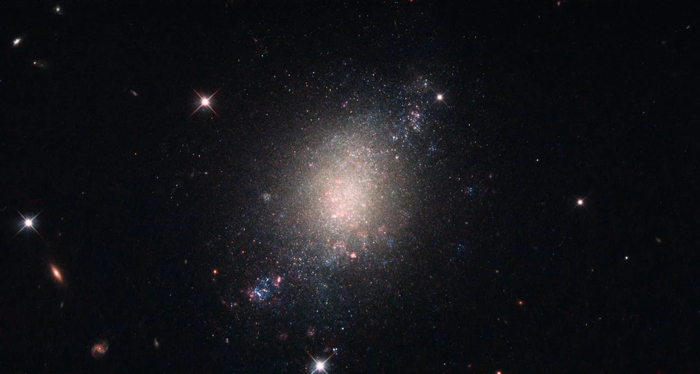
Image credits: NASA
#37 Galaxy NGC 4424
NGC 4424 is a spiral galaxy located in the equatorial constellation of Virgo and 13,5 million light-years away from Earth.

Image credits: NASA
#38 Galaxy IC 5201
IC 5201 is a barred spiral galaxy located in the constellation Grus and about 35 million light-years from Earth.
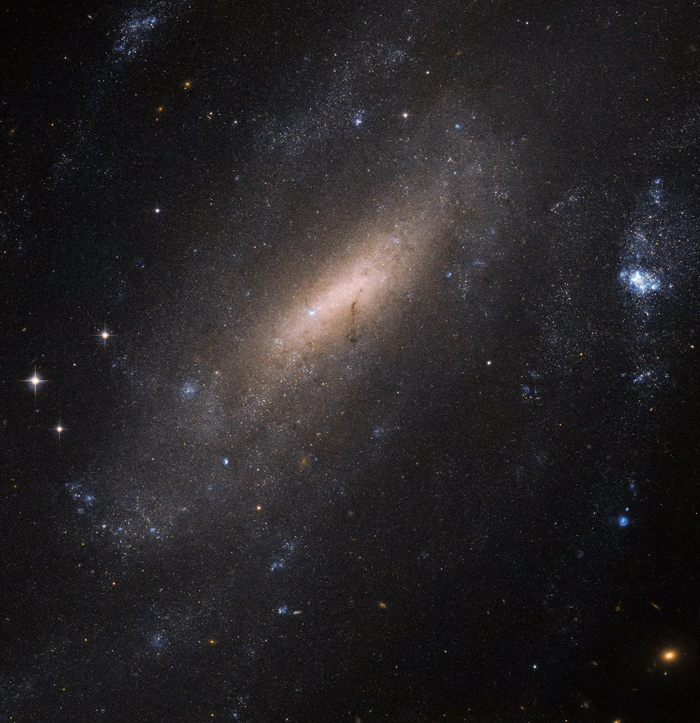
Image credits: NASA
#39 Galaxy IC 3583
Galaxy IC 3583 is an irregular galaxy around 30 million light-years away in the constellation of Virgo.
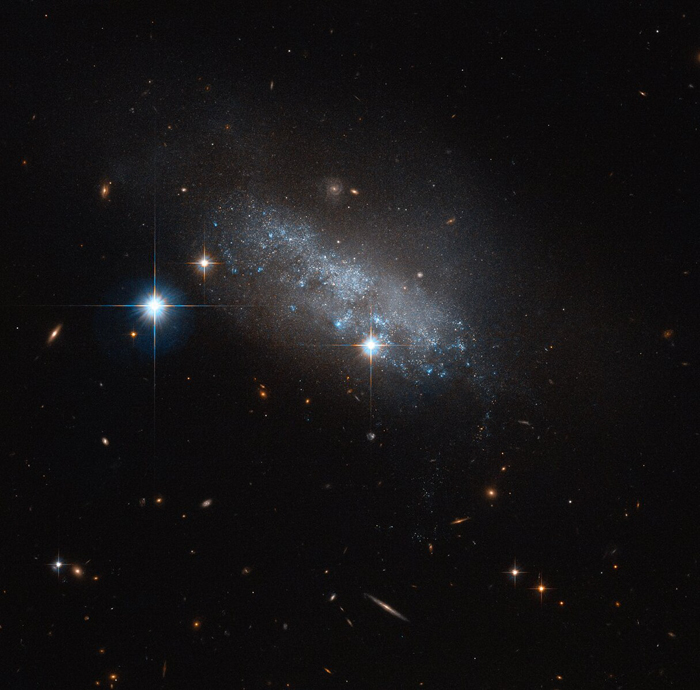
Image credits: wikipedia.org
#40 ESO 137-001
ESO 137-001 is a barred spiral galaxy located in the constellation Triangulum Australe and in the cluster Abell 3627. As the galaxy moves to the center of the cluster at 1900 km/s, it is stripped by hot gas, thus creating a 260,000 light-year long tail.
- You Might Also Like: The Real West: 21 Unfiltered Photos Of Cowboys And Native Americans In The 1800s
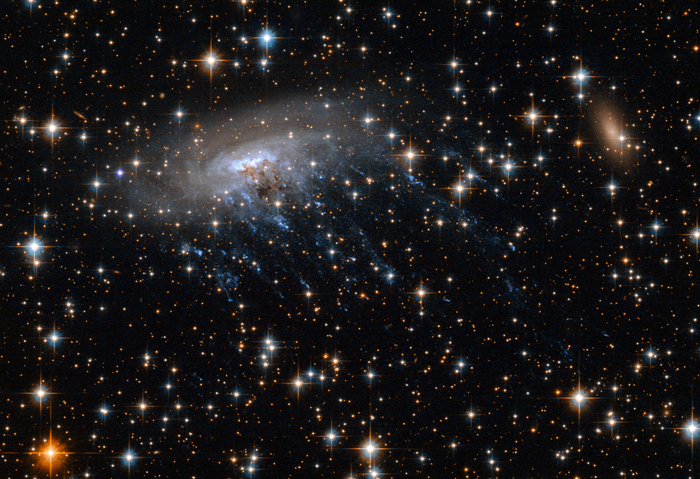
Image credits: NASA







